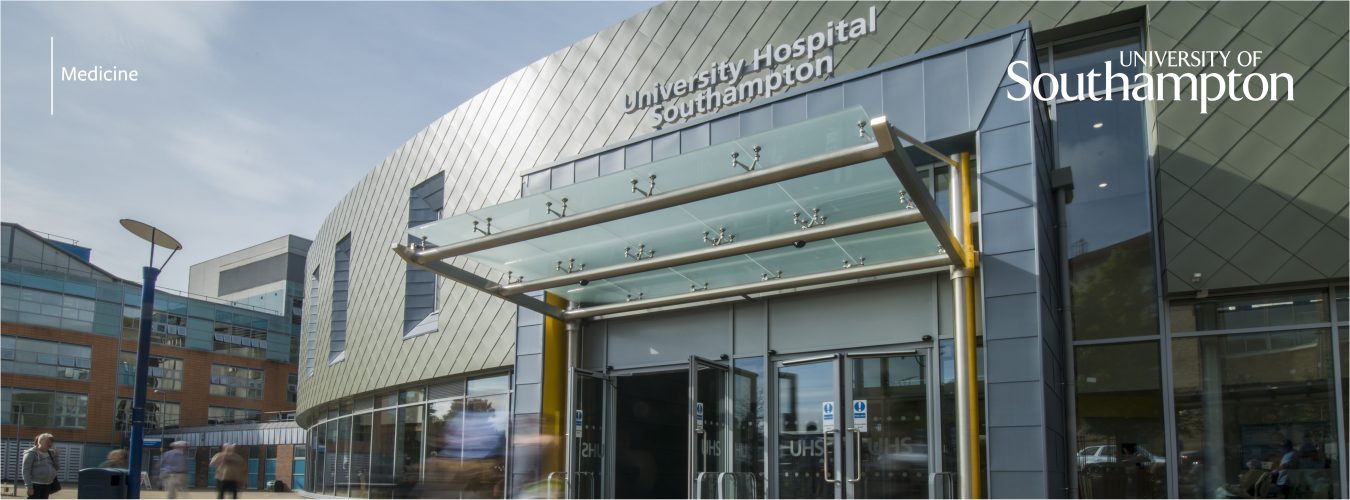‘Inspiring Stories’ with Chris Satchwell and Kate Hough
Patient Contributor
Research Fellow
This is part of the Engaged Medicine ‘Inspiring Stories’ blog series. The blogs explore the stories behind outreach and patient-public engagement activities of staff and students from the University of Southampton’s Faculty of Medicine.
Patient Informed Proposals for Deafness Research
This blog is written by Dr Chris Satchwell with input from Dr Kate Hough. Chris is a patient contributor who grew up with a deaf brother, grew deaf with age, and has an appreciation of some of the technologies underlying cochlear implant. Kate is a Research Fellow at Dr Tracey Newman’s lab, which focuses on investigating the biology of hearing loss and how to improve hearing outcomes for people with a cochlear implant. They have set up a patient-informed research group for people with lived experience of cochlear implants from University of Southampton Auditory Implant Service (USAIS).
Kate and I recently spoke at a Faculty of Medicine workshop which showcased, and sought to spread learning, from various co-produced and participatory research approaches in Southampton. My colleague’s comments on the event were that it was informative and vibrant, really highlighting the importance and benefit of collaboration – between researchers, patients, members of the public, community groups, voluntary groups. The event was a great way to bring these groups together.
This event and meetings of a cochlear implant patient group encouraged me and Kate to reflect on the patients’ role in deafness research. What emerged were two different perspectives on the extent to which patients could be involved in ‘blues skies’ cochlear implant research – the research that might be a stepping-stone to new and important discoveries.
My perspective:
The story of the development of the cochlear implant has lessons for present-day reviewers of deafness research. The first cochlear implant was of little practical use but proved the principle that electrical stimulation of the hearing nerve gave a sensation of hearing. At the time, any reviewer of its research proposal might have refused funding based on the limited immediate practical application of research. To the credit of those reviewers and the inventors, the project went ahead and created a stepping-stone for future work. Twenty years later, Silicon Valley was in full swing with silicon chips replacing the early transistors that had largely replaced thermionic valves. Up to this point, patient involvement would be limited to being experimented on. From this point onwards, patient feedback and involvement would have been vital to refining the cochlear implant into the minor miracle it is today.
My observations are:
(i) This history teaches that reviewers should not reject proposals which offer only a stepping-stone towards addressing a major need.
(ii) The more a research proposal is “blue skies”, then patient knowledge and experience is unlikely to be within its scope. If patient involvement is deemed as essential in research proposals, then “blue skies” proposals will suffer. Conversely, the more “developmental” a research proposal is, the more useful patient involvement is likely to be.
If it becomes easier to get funding with a tick in a patient-involved check box, then researchers are likely to put forward “development” proposals rather than “research”. This will bias research proposals away from tomorrow’s technologies towards today’s, with a consequent loss in both important discoveries and future relevance. If this is not the intention of patient-involved research, it should be made clear that prospects for proposals that cannot reasonably be expected to be within patients’ knowledge and experience will not be compromised by any absence of their information.
Kate’s perspective:
I think that with the new deafness technologies, the involvement of patients and insight into their experiences is still key to the development of these technologies. The current experiences of those with deafness is why further research and new technologies are needed. Whether it be due to the reasons why people who may benefit from a cochlear implant do not go for one or due to the current technologies not working as well for some people. Those with lived experience of deafness may not be involved directly in the technical development of newer technologies, but they may still have valuable input, based on their lived experience, into the planning and designing of the studies being carried out, the production of the research materials that may be required to recruit patients for clinical trials.
You can find out more about cochlear implants and the Auditory Implant Service by visiting https://ais.southampton.ac.uk/. You can find out more about our work and how we have involved patients by emailing Kate Hough at k.l.hough@soton.ac.uk.
For more information about the event and to watch videos from the day click here.
Stay Connected! To find out more about the ‘Inspiring Stories’ series, Faculty of Medicine educational programmes and research, or to get involved use the links below or contact Dr Lucy Green.

University staff or students click here for the Engaged Medicine SharePoint.


